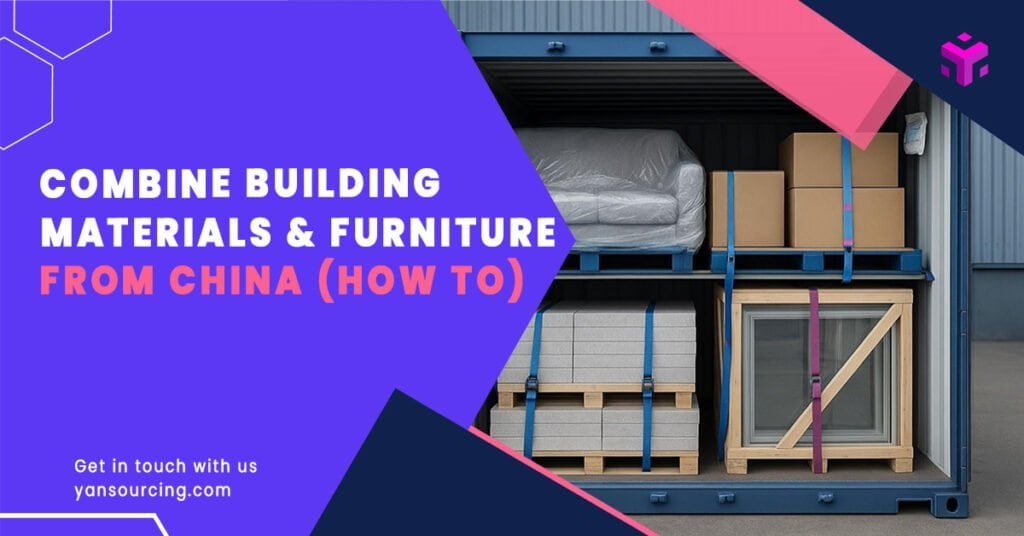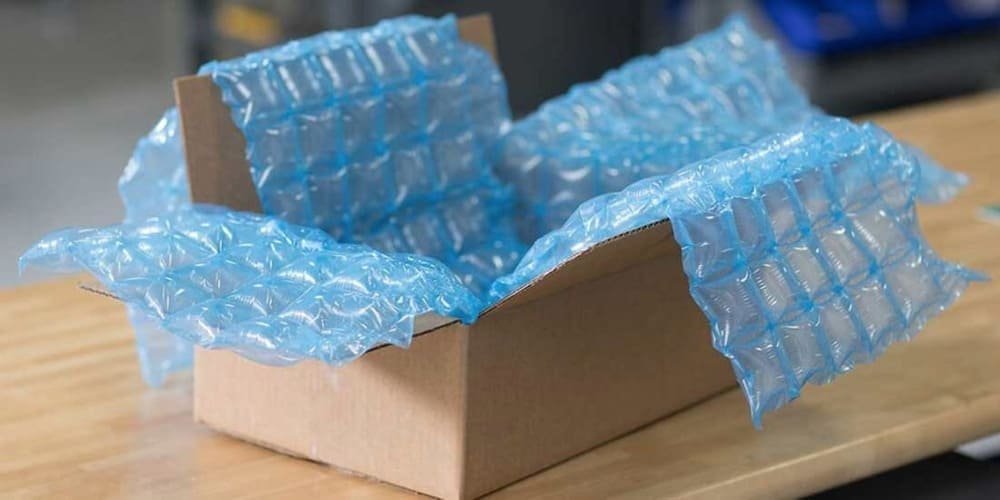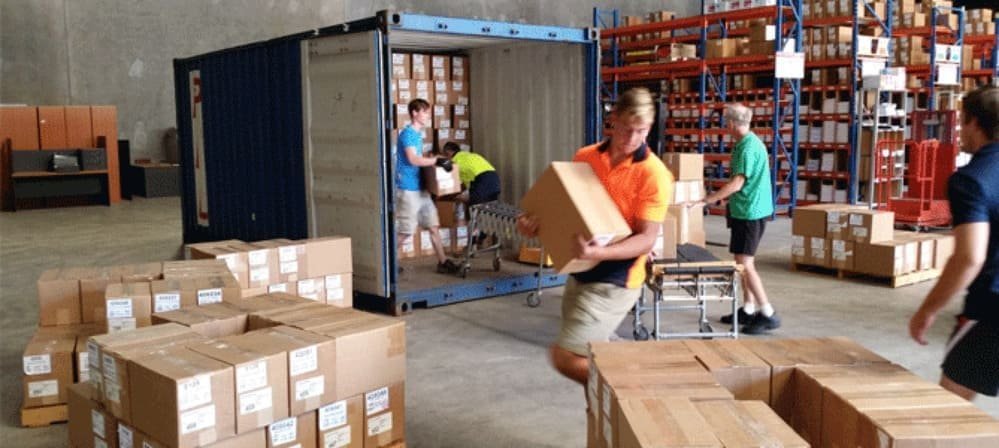
When you’re importing for a specific project—villas, a boutique hotel, an office fit-out—the fastest way to lose money and time is mixed-cargo damage.
Stone and tile don’t compress; sofas and lighting do. Dust migrates, moisture condenses, and a single crushed palette can derail your installation schedule.
This guide shows exactly how to consolidate building materials and furniture into one container safely, on budget, and on time.
1) Plan the consolidation like a project

Start with a readiness matrix that lists each supplier, items, counts, dimensions, weights, and target ETD/ETA.
Decide FCL vs. LCL early.
For mixed bulky loads, 40′ or 40′ High Cube usually provides the best volume-to-weight headroom, while 20′ units suit very dense cargo (tile/stone) that can hit payload limits first.
Confirm carrier specs before booking and watch destination road weight limits.
Calculate CBM item by item and keep a utilization buffer (about 10–15%) for dunnage, aisles, and bracing.
As a quick specification reference, carriers publish container details; for example, see Hapag-Lloyd’s 40′ High Cube container specs.
| Container Type | Typical Use Case | Notes |
|---|---|---|
| 20′ Standard | Very dense, heavy cargo (e.g., tile/stone) | Hits weight limit before volume; check road axle limits |
| 40′ Standard | Mixed loads with moderate density | Good balance of volume and payload |
| 40′ High Cube | Bulky soft goods + some heavy materials | Extra height aids layered stacking; verify payload |
2) Packaging specifications by category (damage prevention)

Packaging is your first line of defense—build a small fortress around each SKU.
Stone and tile travel best in robust wooden or plywood crates compliant with ISPM-15, strapped or banded with edge protectors, and interleaved with foam or cardboard to prevent chipping. Line crates with poly sheeting to contain dust.
Doors and windows (especially glass) need rigid, braced crates with interleaving for glass, foam inserts, and strong corner protection, plus moisture-resistant wraps and clear “Fragile/Do Not Stack” labels.
Wood and upholstered furniture should be in export-grade cartons with corner boards, wrapped with a vapor barrier and desiccants, elevated off the container floor on pallets or skids, and never placed under crush zones.
Lighting and fixtures benefit from double-boxing with molded foam or foam-in-place and should be segregated from abrasive materials.
For wood packaging material (WPM) such as pallets, crates, and dunnage, ensure treatment and marks comply with ISPM-15 (IPPC/FAO); markings must be visible and intact.
3) Engineer the load plan (center-of-gravity and segregation)

A well-engineered load plan prevents compression, abrasion, and imbalance. Heavy goods belong low and soft goods high, with movement confined.
- Heavy-low/light-high stack order to keep the center of gravity low and balanced.
- Segregate dust-generating materials from upholstery and fixtures; use poly sheeting, wraps, and interlayer panels.
- Use interlayer protection (ply/OSB/cardboard and foam) to create crush-resistant barriers.
- Block, brace, and lash with ISPM-15 compliant timber and ratchet straps, verifying strap Working Load Limit and anchor points.
These principles align with safe packing practices in the CTU Code (IMO/ILO/UNECE), which covers stowage, securing, and weight distribution.
4) Moisture and contamination control

Condensation is a silent cargo killer—especially for wood and upholstery. Inspect the container for dryness and cleanliness before stuffing, avoid loading wet lumber or “green” timber, and isolate humidity-sensitive items.
Use vapor barriers and desiccants where appropriate; quantities vary by cargo, voyage length, and climate. The CTU Code’s Annex 3 discusses condensation prevention and practical measures for dry cargo units.
Dust management matters too: bag or wrap soft goods, line crates, and keep abrasive materials away from fabric and finishes.
5) Pre-loading inspection and stuffing supervision

Before anything enters the container, verify quantity, workmanship, and packaging integrity; perform random QC checks on sensitive items; and confirm labels and marks match the packing list.
Record photo/video evidence of the load plan and have a qualified supervisor at the consolidation warehouse to enforce moisture/dust controls and the stacking sequence.
Remember the SOLAS rule: No VGM, no load. Under international maritime safety, the shipper on the B/L must submit the Verified Gross Mass using Method 1 (weigh packed container) or Method 2 (sum cargo + dunnage + tare) in time for stowage planning.
See IMO’s Verified Gross Mass guidance.
- Labeling and documents cross-check (invoice vs. packing list).
- Photo mapping of the stuffing sequence for receiving.
- On-site supervisor confirms blocking, bracing, and lashing per plan.
6) Timeline orchestration across suppliers

Mixed-category consolidation succeeds or fails on scheduling.
Build a readiness matrix and set consolidation cut-offs with buffer days.
Slot each supplier’s inbound to the consolidation warehouse and label lots clearly.
If one supplier slips, choose between splitting that lot, adding a small LCL, or re-slotting the load plan without compromising center-of-gravity.
Communicate milestones for booking, CY cut-off, documentation/VGM deadlines, stuffing date, and photo checkpoints so everyone works to the same clock.
7) Documentation and compliance

Accuracy prevents customs holds and terminal delays. Keep descriptions, HS codes, piece counts, dimensions, and net/gross weights aligned between the commercial invoice and packing list.
Marks on crates and cartons should correlate with the packing list for fast receiving. Confirm ISPM-15 treatment and IPPC marks on all WPM over 6 mm thickness.
Clarify shipper/consignee on the Bill of Lading and add PO or site references if they help on-site receiving.
Submit VGM before the terminal cut-off and retain weighing evidence.
8) Receiving plan at site

Mirror the load plan during unstuffing. Stage heavy hard goods near installation zones, and keep soft goods wrapped until the area is clean.
Photograph each layer as you unload and note discrepancies or damage immediately.
Preserve packaging and take detailed photos if you find issues.
Notify your forwarder and insurer promptly and follow local time limits and policy conditions.
Industry groups aligned with the CTU Code remind shippers to document damage at unpacking; see the Cargo Integrity Group’s concise CTU Code quick guide for unpacking checkpoints.
Practical example: Coordinated consolidation in practice

Disclosure: Yansourcing is our product.
A hospitality fit-out required tile, doors/windows, upholstered seating, and decorative lighting from six factories.
We coordinated packaging upgrades (edge protectors, vapor barriers, desiccants), ran a pre-loading inspection to cross-check counts and carton labeling, and engineered the load plan: tile/stone crates and glazed doors at the base; interlayer panels; upholstered goods above; lighting double-boxed and isolated from abrasive surfaces.
Stuffing supervision ensured straps and timber blocking met the plan, and photo documentation captured each layer for receiving.
When one lighting supplier slipped by three days, we held the core FCL and scheduled a small LCL add-on to keep the site installation on track.
Troubleshooting: Quick answers
- Compression damage: Recheck stack order (heavy-low/light-high), add interlayer panels, and increase blocking/bracing per CTU principles.
- Dust contamination: Improve segregation and wrapping; line crates; clean the container before stuffing.
- Moisture or mold on wood/upholstery: Verify dry container; use vapor barriers and desiccants; avoid loading wet lumber; consult CTU Annex 3 guidance.
- Misaligned HS codes: Cross-check descriptions and codes across documents; ensure labels and marks match the packing list.
- Overweight or imbalance: Weigh and model before booking; distribute evenly; comply with VGM; consider 20′ vs. 40′ selection.
Get a tailored consolidation plan for your project
Get a tailored China consolidation plan for your project—optimized space, minimized damage, and coordinated timelines.
Share your supplier list, item specs, and target dates, and we’ll propose the safest, most efficient way to combine building materials and furniture into one shipment.
